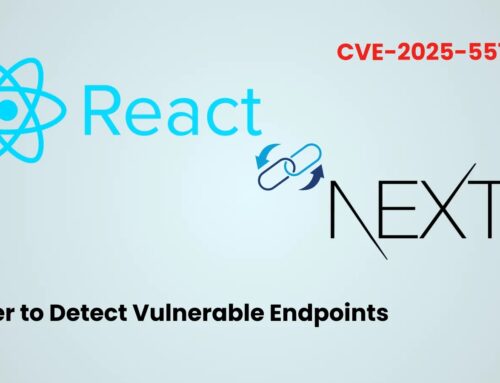
New Quantum Route Redirect Tool Lets Attackers Launch One-Click Phishing Attacks on Microsoft 365 Users
A New Era of Phishing: Quantum Route Redirect Weaponizes Microsoft 365 Attacks
In the evolving landscape of cyber threats, a sophisticated campaign is leveraging a new tool called Quantum Route Redirect to launch devastatingly effective phishing attacks against Microsoft 365 users globally. This advanced automation platform radically simplifies complex phishing operations, transforming them into one-click attacks that successfully bypass traditional security layers. The reach of this threat is significant, with victims identified across 90 countries, and a substantial 76% of targets located in the United States.
Understanding Quantum Route Redirect
Quantum Route Redirect is not just another phishing kit; it represents a significant leap in the automation and sophistication of attack infrastructure. Designed to streamline the entire phishing lifecycle, this tool allows even less technically adept attackers to orchestrate highly convincing and difficult-to-detect phishing campaigns. Its primary target is Microsoft 365, a platform ubiquitous in corporate and personal use, making the potential for widespread compromise exceptionally high.
The tool’s effectiveness lies in its ability to manage various aspects of a phishing campaign, from domain registration and certificate generation to the dynamic creation of phishing pages that mimic legitimate Microsoft 365 login portals. This level of automation significantly reduces the operational overhead for attackers, fostering a rapid deployment of campaigns and a higher success rate for credential harvesting.
The Mechanics of a One-Click Phishing Attack
The “one-click” nature of these attacks refers to the simplified user interface provided by Quantum Route Redirect for the attacker. Instead of managing intricate server setups and manual phishing page configurations, attackers can initiate a campaign with minimal effort. This process typically involves:
- Automated Phishing Page Generation: Quantum Route Redirect dynamically creates highly convincing Microsoft 365 login pages that adapt to various browser and device types.
- Credential Harvesting Facilities: Once a user inputs their credentials, the tool seamlessly captures and stores them for the attacker.
- Bypass of Multi-Factor Authentication (MFA): While not explicitly detailed, advanced phishing tools like Quantum often incorporate methods to bypass or circumvent MFA challenges, further validating the harvested credentials.
- Evasion Techniques: The platform is engineered to implement various evasion techniques, making it challenging for email security gateways and endpoint detection systems to identify the malicious nature of the links.
The global reach of this campaign, impacting organizations across 90 countries, underscores the broad applicability and inherent danger of this new tool. The concentrated targeting within the United States suggests a focus on lucrative enterprises and high-value data.
Why Traditional Security Fails and the Need for a New Approach
The success of Quantum Route Redirect in bypassing traditional security measures highlights a critical gap in defense strategies. Many conventional email filters and intrusion detection systems struggle with sophisticated phishing attempts that:
- Utilize legitimate-looking domains or subdomains.
- Employ SSL/TLS certificates to appear secure.
- Dynamically generate content, making signature-based detection less effective.
- Are delivered from compromised accounts, bypassing sender reputation checks.
This necessitates a shift towards more proactive and adaptive security postures that move beyond simple pattern matching to behavioral analysis and advanced threat intelligence.
Remediation Actions and Proactive Defense Strategies
Addressing the threat posed by Quantum Route Redirect and similar sophisticated phishing tools requires a multi-layered approach. Organizations must prioritize both technical controls and robust user education.
- Strong Multi-Factor Authentication (MFA): Implement MFA for all Microsoft 365 accounts and sensitive services. While advanced phishing can attempt to bypass MFA, a well-configured MFA system significantly raises the bar for attackers.
- Conditional Access Policies: Configure Microsoft 365 Conditional Access to restrict access based on device compliance, location, IP address, and other parameters, reducing the attack surface.
- Advanced Threat Protection (ATP) & Anti-Phishing Policies: Leverage Microsoft Defender for Office 365 (formerly ATP) to enhance email filtering, detect malicious attachments, and identify sophisticated phishing attempts. Regularly review and update anti-phishing policies.
- Security Awareness Training: Conduct regular, engaging, and updated security awareness training for all employees. Emphasize recognition of phishing tactics, reporting suspicious emails, and the dangers of clicking unknown links.
- Simulated Phishing Exercises: Periodically run simulated phishing campaigns to test employee vigilance and identify areas for further training.
- Endpoint Detection and Response (EDR): Deploy EDR solutions to monitor endpoints for suspicious activity, even if an initial phishing link is clicked.
- Monitor Sign-in Logs and Audit Trails: Regularly review Microsoft 365 sign-in logs and audit trails for unusual access patterns, multiple failed login attempts, or access from unusual geographic locations.
- Implement DMARC, DKIM, and SPF: Ensure these email authentication protocols are properly configured to prevent email spoofing and enhance the legitimacy of your organization’s outgoing emails.
Essential Tools for Detection and Mitigation
| Tool Name | Purpose | Link |
|---|---|---|
| Microsoft Defender for Office 365 | Advanced threat protection for email and collaboration tools, including anti-phishing, anti-malware, and safe links/attachments. | Microsoft Defender for Office 365 |
| Security Awareness Training Platforms (e.g., KnowBe4, PhishMe) | Educate employees on phishing recognition and conduct simulated phishing campaigns. | KnowBe4, Proofpoint Security Awareness Training |
| Conditional Access Policies (Azure AD) | Implement fine-grained access control based on user, location, device, and application. | Azure AD Conditional Access |
| DMARC, DKIM, SPF Analyzers/Checkers | Tools to verify proper configuration of email authentication records, preventing spoofing. | DMARCian, Mail-Tester (DKIM/SPF) |
Key Takeaways
The emergence of tools like Quantum Route Redirect signifies a critical shift in the phishing threat landscape. Attackers are increasingly leveraging automation to scale their operations and bypass traditional security. For organizations, particularly those relying on Microsoft 365, a proactive and multi-faceted defense strategy is paramount. This includes robust technical controls like strong MFA and advanced threat protection, coupled with continuous security awareness training for all personnel. Remaining vigilant and adapting defense mechanisms to counter these evolving threats is no longer optional; it is essential for safeguarding organizational data and integrity.





